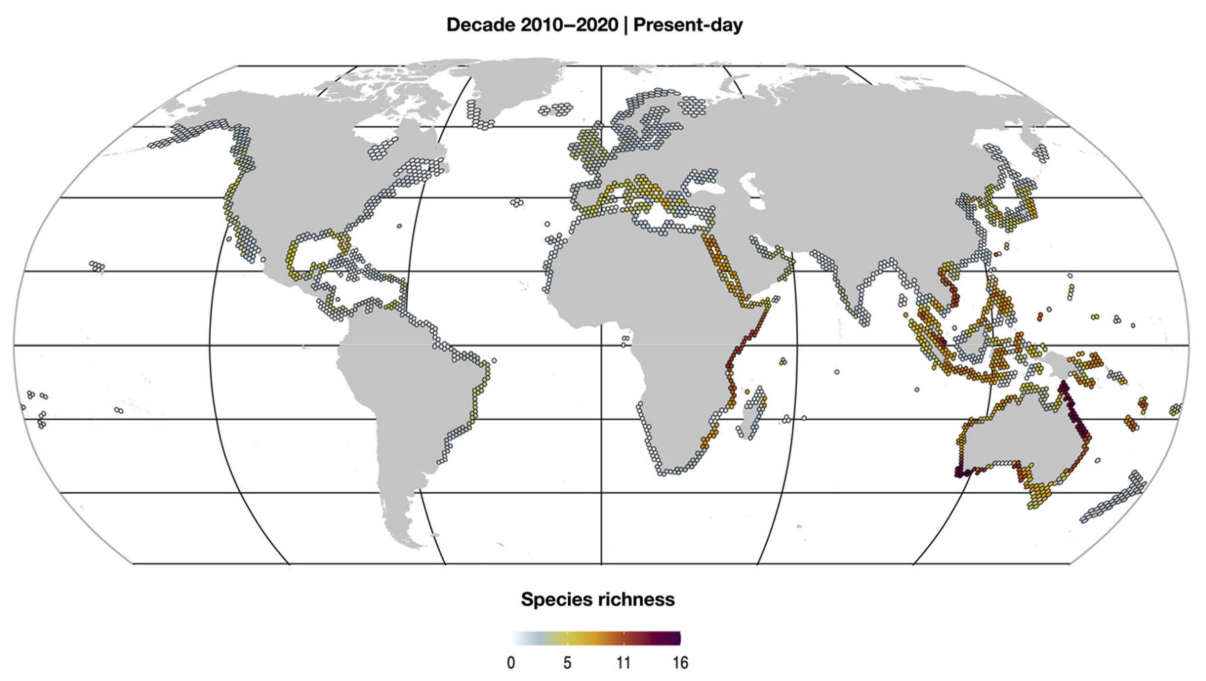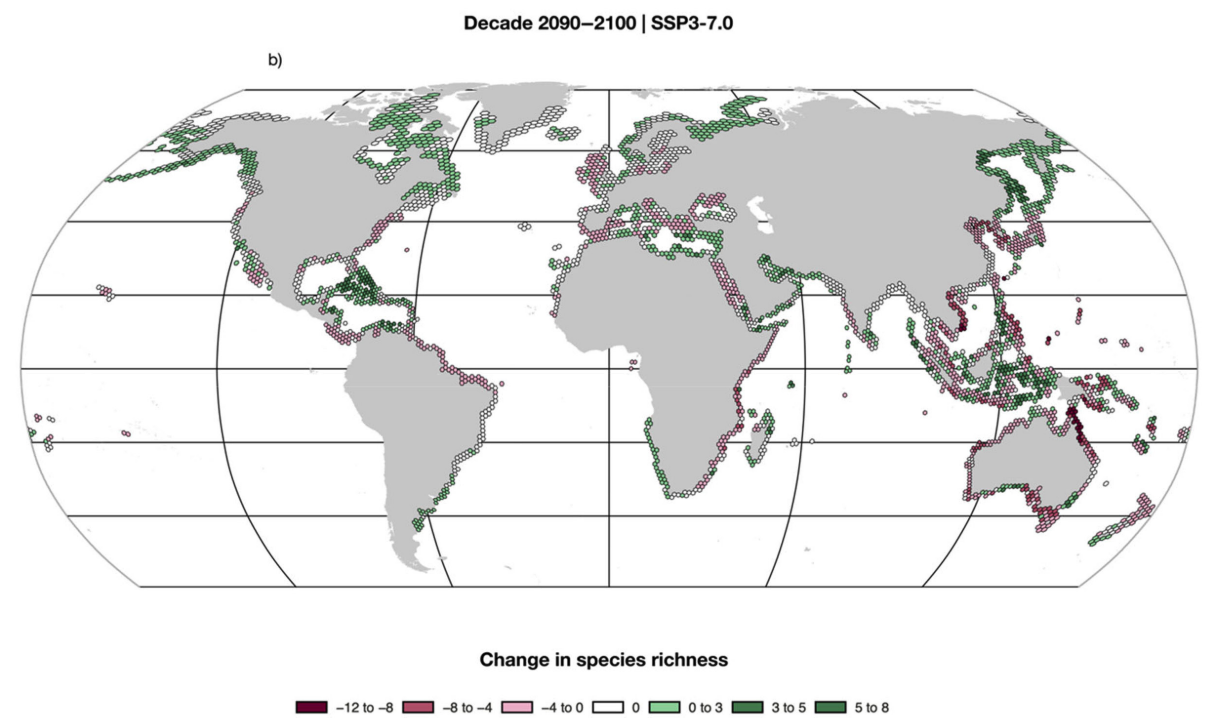Seagrass meadows are the unsung heroes of our marine ecosystems, acting as critical carbon sinks (blue carbon) and providing essential habitat that supports immense biodiversity. They are among the most valuable ecosystems on Earth, yet like many coastal habitats, they are currently under threat from intensifying human pressures and a changing climate. Our new research dives deep into how these vital ecosystems will fare in the face of future global warming.
Knowledge gap
While we know that seagrasses are declining, previous research has lacked a comprehensive, global-scale estimate of the potential changes in their aboveground biomass (AGB)—the part of the plant that creates critical habitat and stores carbon in the short term—under different climate change scenarios. We needed to move beyond regional studies and distribution modeling to quantify this essential ecological asset worldwide.
Main approach
To address this, we employed a sophisticated machine learning approach using a Boosted Regression Trees (BRT) algorithm. This method allowed us to model and quantify the present-day potential AGB of seagrasses across the globe. We then projected future AGB changes under contrasting Shared Socioeconomic Pathway (SSP) scenarios, ranging from the low-emissions scenario (SSP1-1.9, aligned with the Paris Agreement) to high-emissions scenarios (SSP3-7.0 and SSP5-8.5).
Technological challenge - how we tackle the study
A major challenge in global ecological modeling is accounting for the immense variability between different species and ensuring the model’s predictions are biologically sound. We tackled this by building robustness into our BRT model:
We included genus as a fixed effect to account for the major, inherent differences in AGB between seagrass types (e.g., Posidonia has a much higher AGB than Halophila).
We incorporated monotonicity constraints, which force the model to follow biologically expected trends (e.g., maximum temperature should generally have a negative effect on AGB). This step was crucial for managing highly correlated predictors like minimum and maximum temperature, ensuring the model’s high accuracy (83% of variability explained) reflected real-world ecological processes.
Main finding
Our model estimated a present-day total global seagrass AGB of 0.0673 Pg DW (Petagrams Dry Weight), driven primarily by the seagrass genus and temperature conditions. Under future climate scenarios, we project substantial global losses, with the severity highly dependent on the emission pathway:

Fig. Seagrass species richness patterns predicted at the global scale for present-day conditions.

Fig. Changes in species richness (green and purple gradients indicating gains and losses richness, respectively) under the scenarios of climate SSP3-7.0.
The lower-emission SSP1-1.9 scenario projected a global loss of 9.96% in overall AGB.
The higher-emission SSP3-7.0 scenario projected a global loss of 10.26% in overall AGB.
Regionally, losses are projected to be most severe in hotspots like the Tropical Eastern Pacific, Eastern Indo-Pacific, and Tropical Atlantic.
Conversely, pronounced increases in AGB (up to 211.22% in the SSP3-7.0 scenario) are projected in the Arctic and Temperate Southern Africa due to poleward range shifts.
main implications for conservation and management of biodiversity
This study provides clear evidence that global climate mitigation efforts directly benefit marine conservation. Fulfilling the goals of the Paris Agreement would substantially limit the projected decline in global seagrass biomass, protecting their associated ecosystem services, including carbon sequestration and fisheries support. For conservation managers, the findings offer a vital guide:
Prioritize Protection: Conservation resources must be urgently directed toward high-biomass, high-vulnerability regions, including the Exclusive Economic Zones (EEZs) of countries like Brazil, Costa Rica, Panama, Japan, and China, which are predicted to suffer the largest biomass losses.
Integrate Policy: We advocate for integrating seagrass conservation into National Blue Carbon Policy Assessments to bolster national contributions to the UN 2030 Agenda for Sustainable Development goals, ensuring we maintain these critical marine forests for the future.